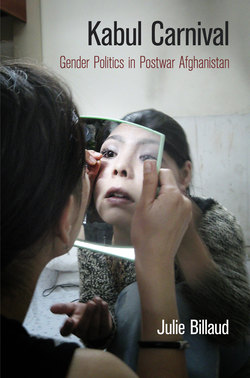Читать книгу Kabul Carnival - Julie Billaud - Страница 12
На сайте Литреса книга снята с продажи.
ОглавлениеCHAPTER 2
National Women’s Machinery: Coaching Lives in the Ministry of Women’s Affairs
Four years after my first journey, in winter 2007, I landed in Kabul for the second time. Renovations had somewhat improved the appearance of the small airport trapped between snowy mountaintops. Customs officers in uniforms were equipped with computers, the moving walkways were running, and passengers were directed toward waiting lines. A semblance of organization prevailed. But what surprised me the most was to discover that even though the city’s infrastructure still remained in disarray, billboards and commercials had anarchically invaded the streets of Kabul. “Roshan, Nazdik shodan!” (Roshan, close to you!), a new mobile phone company advertised. “Urdu y melli Afghan ba shoma zaroorat darad!” (The Afghan National Army wants you!) stated a military officer pointing a finger at an imaginary observer on a poster that copied the famous World War I military recruitment campaign in the United States. “Hafteh se parvaz ba Dubai baa Kam Air” (Fly three times a week to Dubai with Kam’air) announced the new airline company owned by the powerful commander Rashid Dostum. The advertisement boom signaled a radical shift not only because under the Taliban images had totally disappeared from public spaces—a decree had declared visual representations of human beings un-Islamic and banned TV sets and cameras—but also because of the sharp contrast between these consumerist messages and the increased visibility of public poverty resulting from internal displacements and massive returns of refugees.
